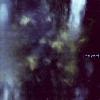- John Kealy
- Albums and Singles
Coming across as a stripped down version of Pelican, Una Corda combine melodic playing with a heavy edge. There’s no denying that Una Corda are tight; all of the pieces on this EP are performed with acute precision. Unfortunately the power that they displayed during their performance at Supersonic recently isn’t prevalent for most of the disc. There are times when the vitality they have pokes through (such as on “Three” which was worth the purchase alone) but thanks to a slightly muddy mix Proper Position for Floating [1881] isn’t as good as it should be. However it didn’t cost me much and hopefully Una Corda will release a better document of their work soon.
Read More
- Administrator
- Albums and Singles
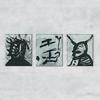 The Norwegian group’s second album is a dark and powerful collection of sinister soundscapes. Combinations of unearthly drones, organic sounds and traditional instrumentation are used to make a potent and captivating album.
The Norwegian group’s second album is a dark and powerful collection of sinister soundscapes. Combinations of unearthly drones, organic sounds and traditional instrumentation are used to make a potent and captivating album.
Silber
Looking past the unsightly layout of the sleeve (fantastic drawings with disgusting fonts), the album opens with “Faint Echoes Ran Round the Unseen Hall (Part 1)” which sets the mood for the rest of Dronesyndrome: unease. Thick drones and incidental noises immediately fill the room and smatterings of drumming and guitar add a hint of menace to the piece. As first impressions go this has definitely put Kobi in my good books.
Instead of relying purely on drones (and Kobi are adept at creating spectacular drones) they also utilize a sparse drumming style on many tracks. They capture a primal feeling that is all too frequently absent in music. This is the sort of music that is best experienced in the dark while lying down. It is easy to get lost between the sounds and occasionally get pulled back into the land of the living. One of the song titles nails this sentiment: “Interspersed with Semi-conscious Moments.” This piece is claustrophobic and unsettling. The watery noises and scraping made me feel ill at ease. Here the group do not just rely on synthesised drones but also with cello which makes the piece sound closer to home, intensifying the force of the piece.
Some elements used during Dronesyndrome I’m less than hot on. “This Inclusion is not a Simple Operation” uses a recording that sounds like it was taken from a pre-recorded tour guide from some crappy museum. The music used in this piece is of the same quality as the rest of the album but the sound of this man talking about local history doesn’t sit well with it. Luckily these niggling moments are few and Kobi mostly bypass the usual pitfalls of dark, atmospheric music.
Kobi make great use of dynamics throughout Dronesyndrome. Careful attention to detail (it’s taken two years to make and it shows) has paid off because this album sounds amazing. The mix is never overcrowded; there is plenty of space between the sounds. This meticulous production on top of the distinctively good music means that I’ll be placing Dronesyndrome in a place of prominence on my CD rack.
samples:
- Faint Echoes Ran Round the Unseen Hall (Part 1)
- The Evening was Unusually Sultry and Heavy
- Such Variations will be Encountered Again
Read More
- Administrator
- Albums and Singles
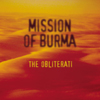 Never a group content to rest on their laurels, Mission of Burma's third studio album and their second since reforming after a 20 year hiatus finds them raising the bar higher than ever with surging guitars, pummeling rhythms, and some other surprises that show a remarkable growth and renewed vitality in their songwriting.
Never a group content to rest on their laurels, Mission of Burma's third studio album and their second since reforming after a 20 year hiatus finds them raising the bar higher than ever with surging guitars, pummeling rhythms, and some other surprises that show a remarkable growth and renewed vitality in their songwriting.
When I heard about their reunion a few years back, I was glad that they were giving themselves the opportunity to enjoy the fan base that had grown around them in their absence since their premature dissolution. Yet when they took that a step further and announced an album of new material, I was afraid they might be tempting fate by risking their legendary status with songs that betrayed the fact that they hadn't played together in so long. In some ways, the resulting ONoffON did little to assuage my doubts. The stronger songs were from the later end of Burma's first era and the others showed signs of rust as they overreached a bit trying to figure out whom exactly their new audience was. As a result, I wasn't terribly excited when I found out about the release of The Obliterati, but I had no reason to worry as it has in abundance everything I thought the previous album lacked.
Something I've always liked about Burma is how democratically they operate. No instrument is more important than another, and yet each element remains distinctively compelling within the whole. From the beginning they're tight and crisp as"2wice" hits with punchy drums that eventually culminate in a stunning anthemic statement that other lesser bands spend an entire album trying to discover, yet Burma's only getting started. Their sense of dynamics has always been one of their strengths, and in that respect this album is no different, such as on "Spider's Web" when they use space as a compositional tool or the beginning of "1001 Pleasant Dreams," which effectively builds tension. This also works on a larger scale in the way they sequence their songs, keeping things fresh by building momentum and then changing the pace, whether from the straight thrust of "Man In Decline," the slower yet effective "Period," or the instrumental "The Mute Speaks Out."
One thing that's a little different is the way they use vocals this time out. The first couple of tracks have unexpected harmonies and falsettos, but it's not until "Donna Sumeria" that the vocals steal the spotlight in a harmonic break that harkens back to Motown without straying too far from their own sound. The good thing about the chances they take with the singing is that they work. Even the unholy, airy chorus in "Nancy Reagan's Head" feels like a natural diversion rather than something arbitrary. Lyrically, they've retained their passion and conviction even while exploring some tender thoughts without having to sacrifice the music in the process. Of course they still have their smart-ass sense of humor, epitomized when they take a shot at our Former First Lady on, appropriately enough, "Nancy Reagan's Head": "And I'm haunted by the freakish size/Of Nancy Reagan's head/No way that thing came with that body." Bob Weston deserves a lot of the credit for the sound of this album. Not only does he make every element sound vitally important and unique, but the various loops and other noises he adds in Martin Swope's former role are exquisitely placed within both the songs' structures and the mix itself.
With this album, Burma prove that whatever curse may have hung over them in a previous era is long gone and rather than merely deserving success, they've done more than enough to earn it.
samples:
Read More
- Administrator
- Albums and Singles
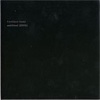 This selection of works by López is disappointingly lacklustre. Compared to his normally vibrant work, the pieces here are drab and unexciting. Most of it feels like López is just rehashing various older ideas and not pushing any of the boundaries that usually make his work interesting.
This selection of works by López is disappointingly lacklustre. Compared to his normally vibrant work, the pieces here are drab and unexciting. Most of it feels like López is just rehashing various older ideas and not pushing any of the boundaries that usually make his work interesting.
 
Anoema
Untitled (2005) is uneventful. I find it hard to believe that any artist, let alone one as talented as López, could make lush field recordings from a Brazilian rainforest into something so banal but he manages. "Untitled #178" is just over 15 minutes of said tedium. Part of the problem is that the fidelity of the recording is quite poor, in addition to the trebly sounds of nature there is extra hiss that turns insect calls into slurs. The experience is like listening to a third generation tape on a crappy all in one stereo which is not exactly appealing.
The second half of the album is a little more exciting than the first. "Untitled #111 (For Jani Christou)" is a commissioned piece performed on an array of normal instruments (saxophone, tuba, cello, double bass, etc.) but with all instrument identity processed into oblivion. A metallic, reverb-laden drone is all that is left which gains momentum into noisy static. It isn’t particularly exciting but is a step in the right direction after the first two pieces.
The final piece, "Untitled #183," finds López nearly back on form. It is a collection of field recordings made in Quebec over two summers and it is a huge step up from the Amazon recordings discussed earlier. The sounds of bees and running water are fresh and animated. López has successfully captured the character of the environment. This piece makes Quebec seem about a hundred times more appealing than the Amazon. This isn’t to say that this piece is amazing; it reflects more on the mediocrity of "Untitled #178."
Since being turned on to López about two years ago I’ve been continually pleased with what I’ve heard. However Untitled (2005) is a blow to his reputation in my eyes. It is almost like a conveyer belt version of one of his better albums. I imagine this is a blip as opposed to a sudden change in the quality of his work and I hope that his future releases return to the level of composition that I know he is capable of.
samples:
 
Read More
- Administrator
- Albums and Singles
 Andrew Liles continues to take the familiar and turn it into something warped, something weird. Now, however, he's doing it in a perhaps unexpected way. Concertos normally have three movements and are typically composed for a solo instrument and an orchestra; the piano is the only proper instrument on this record. Liles, however, makes sense of it all plays the piano in a way that has me looking at the instrument in a whole new light.
Andrew Liles continues to take the familiar and turn it into something warped, something weird. Now, however, he's doing it in a perhaps unexpected way. Concertos normally have three movements and are typically composed for a solo instrument and an orchestra; the piano is the only proper instrument on this record. Liles, however, makes sense of it all plays the piano in a way that has me looking at the instrument in a whole new light.
Beta-lactam Ring
A dying submariner, lost in some dismal cinema of murky water, frightening aquatic life, and the weight of death literally on his shoulders is all the artwork for this release sugggests to me. The blind eyes, exposed teeth, and pale complexion on the cover are supposed to say a little something about the dive suit seen inside the packaging. When those first hidden piano notes begin to rumble like a monster rising from the depths, it is easy to think that the rest of this album is going to be a dark ride, the first and last adventure of someone who is unaware of the danger lurking below.
The Dying Submariner..., however, reminds me more of a classical fantasia, a whimsical adventure worthy of far more color and infused with a life equally as complex as the zoology of creatures suggested by the artwork. There are minor chords struck by Liles' piano playing, but there is also a flurry of activity that skips about in the music, very noticeable in the closing moments of the first movement and readily apparent at other times in each of the other pieces. This could be contributed to how naked much of Liles' performance is. While there is no orchestra to make this a concerto proper, the reverb of the title does add a sense of accompaniment. By itself, however, is Liles' beautiful writing and performance, standing above the simple reverb and feeding off of it simultaneously: eloquent and poetic at times, it conjures a sense of depth and emotional content, and then harsh and invigorating other times with the full range of fear, anger, and confusion instilled in Liles' heavy handed strikes and melancholic strokes.
Each track brings a different thrill despite the monochromatic possibilities inherent in arranging for a single instrument and effect. Liles makes beautiful use of the piano's voice, letting it ring out and sing in a way that reminds of Claude Debussy's work at times. Despite the crushing weight of the water, of depression, of doubt, there is a sense of hope and happiness in the way the instrument is played upon. There can be no doubt of the darkness surrounding this piece, however. So, at other times, Liles exposes the instrument as a rotten beast, coughing and hacking into tunnels so deep and dangerous that man hasn't dared to touch their mysteries. Liles continues to outdo himself over and over again. I know he's played with Nurse with Wound, but comparisons between him and Steven Stapleton make as much as sense as comparisons between Salvador Dalí and Georges Bataille do (that is to say that comparison is becoming null and void, the result of a genre's name moreso than a result of any musical similarity). Liles voice continues to grow more unique and more diverse with time. This album should not be missed.
samples:
Read More
- Administrator
- Albums and Singles
 The new EP by Boston’s 5ive sees the reissue of two pieces originally released on a split 12” with Kid 606, bundled with two new Justin Broadrick remixes. Granted the cover art is pretty gross but most of the music contained within is of the topmost quality.
The new EP by Boston’s 5ive sees the reissue of two pieces originally released on a split 12” with Kid 606, bundled with two new Justin Broadrick remixes. Granted the cover art is pretty gross but most of the music contained within is of the topmost quality.
The two pieces from the VS split with Kid606 make up the backbone of Versus. Both “Soma” and “Reso-I” are fantastic tracks. For the uninitiated, 5ive are a two piece instrumental band. With just guitar and drums they build up some of the most exciting music. These two pieces highlight 5ive’s talents. Ben Carr’s guitars are thickly layered without the sound becoming mushy. The distortion he gets out of his amp, especially on “Reso-I,” makes his riffing sound like balls of flame. Charlie Harrold’s drumming complements the guitar playing exceptionally; these are two musicians that are well in tune with each other. The best thing about the duo is that even though the songs are longish, they know when the piece has gone far enough and stop.
Broadrick adds his distinctive touch to two remixes of “Soma.” The first one acts as a short intro to Versus. It is radically different to the original mix; the huge rocking vibes from 5ive are replaced with Broadrick’s fragile shimmer. It’s a run of the mill mix for Broadrick and its brevity stops it going anywhere. The second remix is much better. 5ive may as well not be on the track as it is pure Broadrick. This could sit easily on a Jesu release. A slow drum beat, a simple guitar melody and those gorgeous synthesisers that Broadrick uses make this a stunning reconstruction of “Soma.”
This EP isn’t essential if you own the Kid 606 split. However, for me it is a better purchase because I don’t particularly like Kid 606 so having those two tracks along with one great remix (and one superfluous remix) on a separate CD is my preference.
samples:
Read More
- Administrator
- Albums and Singles
 The first album from Bergen’s Espen Sommer Eide under the name Phonophani is remarkable. There’s no two ways about it, this is an essential album. It may be eight years old but sounds fresher than the vast majority of new albums that have come my way.
The first album from Bergen’s Espen Sommer Eide under the name Phonophani is remarkable. There’s no two ways about it, this is an essential album. It may be eight years old but sounds fresher than the vast majority of new albums that have come my way.
Phonophani’s self titled debut was first released in 1998 and now it has been reissued with an additional three tracks. Consider these bonuses add up to a sizeable 20 minutes of music (which is of the same quality as the original album), it is well worth repurchasing. From the second “I.F.A.” starts to the time the CD spins down I was captivated. With each listen I found new sounds and textures opening up. Huge segments of the album feel alien; it doesn’t sound like a human made some of this music. At other times Eide’s personality and mortality shine through, the looped acoustic guitar and gently sung vocals on “C” show this more than anywhere else. In contrast “Zurnas” has a gorgeous rhythm not unlike the kind of unorthodox beat that Coil would use. It’s like Eide has tapped into a transmission from another dimension. The off kilter rhythms continue throughout the album; they’re compelling but just weird enough to set you at unease.
It’s not just peculiar beats that Eide uses to great effect; he also uses a range of glitches and almost symphonic swells of sound. “Duration-happiness” makes use of violin type sounds (they could be violins or they could be synthesiser, no details are given for what Eide has used) to create a gentle and melancholic mood. This is another feature of Eide’s music that I fell in love with, his ability to connect emotionally with his audience through sound. The aforementioned “C” is the most obvious example of Eide breaking through due to its conventional instrumentation. More abstract pieces like “Sol” and “Kaliphoni” are just as potent.
It is a beautiful album from all angles; the pieces are composed and played wonderfully, the production is top notch and the sleeve fits the otherworldly feel of the music.The Norwegian government must be adding something magical to the pickled herring. I can’t think of any other reason for so much good music coming from the north. Knowing that I’ve been missing out on it for eight years is annoying but I’m delighted to have heard it. Now it’s time for me to pick through the rest of Eide’s output.
samples:
Read More
- Administrator
- Albums and Singles
 In Iran, heavy metal is banned. Of course, this means there is a strong metal underground. One band from this scene, Ahoora, are trying to do what they can to get their music heard both inside and outside their home country. Luckily, although the music is not a step forwards (nor even a step sideways) for metal, it is very good.
In Iran, heavy metal is banned. Of course, this means there is a strong metal underground. One band from this scene, Ahoora, are trying to do what they can to get their music heard both inside and outside their home country. Luckily, although the music is not a step forwards (nor even a step sideways) for metal, it is very good.
Self-released
This is their first official album to be released but not the first album they made. Their first album was a collection of demos that wasn’t allowed past the Iranian. So for their self titled debut, Ahoora have gone the home recording and DIY distribution route. The production has suffered because of this, although I must make the disclaimer that all they could make available to me at the time were 128kb mp3s. However it sounds like the guitars didn’t get the most polished recording, the distortion is very tinny. I have to say, for many artists this would put me off but I’m willing to make an exception here because I don’t imagine it being easy, even recording at home, to crank up a load of tube amps in Iran without drawing unwanted attention to yourself.
The opener, “Spiritual Creator,” doesn’t sound too promising at first but Ahoora find their feet quickly. There’s a strong hint of Iron Maiden and Iced Earth here. I’m a fan of the former but not the latter; luckily Ahoora can pull it off. The album goes up a notch with the next song, “Beyond the Reasonable Doubt of a Lunatic,” which then goes through peaks and troughs of quality through its twelve minutes. It does contain a quality solo about four minutes from the end which segues into the rest of the song beautifully. I must admit I plugged in my air guitar for it.
The album gets better as it goes on with the songs “Flock” and “Tale of the Crimson Path” taking centre stage. Both are metal in its most unadulterated form which, although far from innovative, they are well executed. This sort of by the book metal fits with the band’s name, Ahoora is roughly translated as “purest pure” and it strikes me that Ahoora have set out to play anything more than pure metal. Anyone who doesn’t have a love of all things leather and studded will have a hard time digging this but for me this is a nice break from all the doom and black metal that is so popular these days.
With any luck, Ahoora will be able to make available better quality copies of this album via downloads or at least in the future be able to make better quality recordings as it is one of the main things holding them back. Their songs are well written and performed but are sometimes too derivative. With a little more development of their sound, even with the rough recording, they could be a formidable band as they’ve got the fire to play in spades.
samples:
Read More
- Administrator
- Albums and Singles
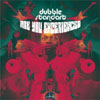 This Austrian band's prior release, the spectacular Heavy Heavy Monster Dub, revitalized my interest in dub reggae and made its way into my "best of" chart in 2004. So why does their new one leave me less than enthused?
This Austrian band's prior release, the spectacular Heavy Heavy Monster Dub, revitalized my interest in dub reggae and made its way into my "best of" chart in 2004. So why does their new one leave me less than enthused?
Don't get me wrong. I have much love for Dubblestandart as well as Collision, the Echo Beach imprint whose burgeoning catalogue includes contributions from such quality artists as Africa United, Dub Syndicate, and Keith LeBlanc. Yet I question whether the band's latest two-disc effort quite meets the challenge of producing what one could call "outsider dub" in the 21st century. Much like kindred spirit George Evelyn's Nightmares On Wax did with mixed end-results on 2002's Mind Elevation, Dubblestandart here veers into poppier territory. Judging from the material, they might have done better to journey towards Kingston instead of Vienna.
Nowhere is this Achilles' heel syndrome more apparent than in the group's selection of vocalists, most of whom are woefully detached from the spirit of the music, to say nothing of its roots. Noa More and major label singer Gudrun reach for the radio dial on their four respective tracks, doing a disservice to the groovy bass, guitar, drum, and synth arrangements that zealously toil below their voices. The lackadaisical G. Rizo seems far more at home on electroclash throwaways (she has recorded for Gigolo) than on "The Rhythm," as evidenced by her seemingly disinterested take. Thankfully, Ari-Up, an infamous performer who has previously impressed with her work in New Age Steppers and seminal act The Slits, unsurprisingly represents well, albeit minimally, on her sole contribution, "Island Girl Dub."
Although technically a remix album, Heavy Heavy Monster Dub shone a spotlight on the band's capabilities, and fortunately there are cuts on Are You Experienced that similarly display that strength. "Everything Is Go" has a classic vibe to it, while the dub of "Heights Of Paranoia" reaches cosmic levels, with the players jamming freely while maintaining listenability, a testament to their undeniable talent.
The spacey "Star Spangled Dub" closes the album out with uncharacteristic beatless brevity, a strange segue into the "bonus" second disc of generally unecessary and, at times, redundant remixes of previous material. It's good to have the two mixes of "Return From Planet Egalica" on CD, but was it really necessary to include previously released cuts like Keith Leblanc's take on "Terrarists and Inhalers" and the Sounds From The Ground remix of "Evil Empire" again? In a perfect world, I would've been thrilled over such an extensive package of new Dubblestandart material and remixes, yet taking into account all of these flaws I can't help but wonder whether the band has lost its way.
samples:
Read More
- Administrator
- Albums and Singles
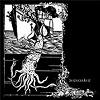 The debut EP from the Atlanta doom metallers Zoroaster is a solid disc of riffery. It may not be the best Sabbath worship I’ve heard but it’s definitely above average. They do not reach the heady heights of Sleep or Electric Wizard but this release shows that they have the potential to rise up to meet those sonic titans.
The debut EP from the Atlanta doom metallers Zoroaster is a solid disc of riffery. It may not be the best Sabbath worship I’ve heard but it’s definitely above average. They do not reach the heady heights of Sleep or Electric Wizard but this release shows that they have the potential to rise up to meet those sonic titans.
Battle Kommand
The self-titled EP opens with “Mons Venus” which starts off less than excitingly. The vocals sound like they came from a completely different recording session to the music. They sound too clinical (in a growling sort of way) for them to fit properly with the rest of the song. Musically I can’t fault it; the playing is tight, heavy and pushes all the right buttons at the right time. Had the vocals been better mixed then it would be a much stronger piece but as it stands it doesn’t pummel me into oblivion like the later pieces do.
As the CD goes on, it gets better and better. “Bullwhip” increases the tempo and the rhythm that forms is substantial and straightforward. The vocalist relies less on growling and more on singing (while keeping a healthy dose of gravel in his throat) which fits better with the music. Slowing down again, “Honey and Salt” is a huge, full guitar and bass refrain that suggests to me that this is only the tip of the iceberg with Zoroaster. They’re not rewriting the rules of doom but with this song they at least show that they are more than capable of keeping up with the giants that have gone before.
Zoroaster finishes with “Defile” (well there’s a short secret track but it is of little consequence compared to this). Here Zoroaster peak as everything falls into place. The failed vocal style from the first song returns but this time it works far better. The music is less dependent on one or two repeating riffs; the greater variety means that the band explodes from the speakers again and again over the eleven minutes giving a constant barrage of powerful riffing.
The half an hour of doom presented here by Zoroaster has whetted my appetite for more. Their forthcoming album with Battle Kommand will be the true test; if they continue with songs like “Defile” and “Honey and Salt” then I’m sure it will be the dog’s bollocks. If they become formulaic and just another doom band then at least I still have this EP to fall back on.
samples:
Read More
- Administrator
- Albums and Singles
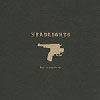 Headlights play music which is not dissimilar to their predecessors on the Polyvinyl label like Rainer Maria: a mixture of male and female vocals with high melodies and catchy phrases. Songs alternate from jumpy to languid, sometimes even within themselves. Headlights use a healthy amount of keyboards at times for atmospheric sounds, strings, or chirpy measures. It's unpretentious music: all hooks and fun without dreary concepts regarding composition.
Headlights play music which is not dissimilar to their predecessors on the Polyvinyl label like Rainer Maria: a mixture of male and female vocals with high melodies and catchy phrases. Songs alternate from jumpy to languid, sometimes even within themselves. Headlights use a healthy amount of keyboards at times for atmospheric sounds, strings, or chirpy measures. It's unpretentious music: all hooks and fun without dreary concepts regarding composition.
Polyvinyl Records has been releasing unobjectionable indie rock for some time now. The first time I ever laid my hand on one of their releases was when I was living in Chicago and trying to put together an eclectic d.i.y. show on the south side. We already had some grindcore bands like Charles Bronson and MK-Ultra signed up, but needed some more fodder. Someone suggested Rainer Maria from Wisconsin and I picked up their first EP with its oppressively white, pink, and purple cover. It looked like a sunset gone wrong and the music itself was almost a collection of odes to sunsets, relationships, summers, and all of that good stuff you want in your songs. Needless to say, they didn't quite fit with the tenor of the show, but Polyvinyl has continued to release likeminded indie rock which flows from the overly saccharine to the slightly edgy. I hadn't paid much attention to the label for a while since my interests had strayed elsewhere, but the new(ish) releases by Headlights have reawakened me to the label.
The band started last year's debut EP with the whimsical "Tokyo," a less-than-high-speed journey through what could be trials of endless touring (the band has played over seventy shows this year already) or simply long-distance yearning. Though you can hear the exhaustion as the bass and guitars slide off into silence with each punctuating verse, the song never feels weary or enervated. Instead, the band keeps pushing onwards, meeting every deceleration with spontaneous energy to continue on. Erin Fein's vocals are purely harmonizing tools for the first two songs on the EP, dancing playfully around Brett Sanderson's. Fein and Sanderson split vocal duties on "Everyone Needs a Fence to Lean On" and suddenly you realize that Fein has this perfectly-formed, lollipop voice that is easier to swallow than a sugar-coated Advil. In the middle refrain of the song, her voice delicately evaporates into the swell of the music but leaves such a strong, seamless, and sweet resonance. It's a delectable aftertaste and one you should long for.
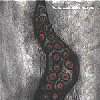 Between tours and in the advent of their upcoming (late August) full-length, Headlights have released a split 7" single with The Most Serene Republic. Resist all the hype going around about the Arts and Crafts label and how infectious Broken Social Scene is and all that other malarkey and give the Headlights side the first listen. (Actually, the Serene Republic song is pretty good, but that's not my concern here.) Plodding piano, lusciously exasperated vocals, Humpty Dumpty motifs, and a deliberately building climax grace all four minutes of this gem. When that song gets you hooked, go find a sample MP3 of the Headlights' song "TV" from the upcoming album. It will be your unpretentious summer anthem.
Between tours and in the advent of their upcoming (late August) full-length, Headlights have released a split 7" single with The Most Serene Republic. Resist all the hype going around about the Arts and Crafts label and how infectious Broken Social Scene is and all that other malarkey and give the Headlights side the first listen. (Actually, the Serene Republic song is pretty good, but that's not my concern here.) Plodding piano, lusciously exasperated vocals, Humpty Dumpty motifs, and a deliberately building climax grace all four minutes of this gem. When that song gets you hooked, go find a sample MP3 of the Headlights' song "TV" from the upcoming album. It will be your unpretentious summer anthem.
samples:
Read More


